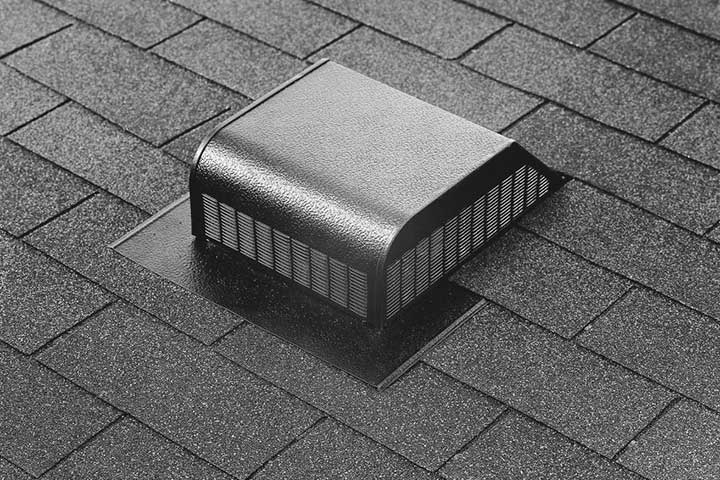From mid-spring until early fall, the sun beats down on the roof top and heats up the attic space. It can get up to 130° F. If this hot air is not cleared out… please read on.
Helpfull Article On Attic Ventilation
First Some Definitions: There are 2 types of attic ventilation fans, please read on to see the difference
Attic Roof fan: Installed in the roof itself. From the outside, it looks something like a mushroom. Operates with an automatic thermostat. It pulls outside air in through the gable vents, and any soffit vents or passive vents if they exist.
Gable fan: Fan installed inside the attic against a gable vent at the side of the attic and operates with a thermostat. Since you can only pull air through one vent, it isn’t as big or able to do as much as a roof fan.
From mid-spring until early fall, the sun beats down on the roof top and heats up the attic space. It can get up to 130° F. If this hot air is not cleared out, it will slowly saturate the beams, insulation, ceilings and walls. The large mass of hot air and the heated wood, insulation and sheet rock slowly transfers this heat to the top floor (or main floor of a ranch style house). This is why the outside can be cooling off in the afternoon/evening but the house is still getting hotter and hotter inside.
The solution is to get rid of this high volume of hot air. With a typical thermostat setting of 110° F, the roof fan turns on, pulls out the hot air out, replacing it with cooler air being pulled in through the vents. A roof fan can pull air through the 2 gable vents and/or soffit vents on the roof overhang. Even if it’s 90° outside, that’s a lot cooler than the 130° attic air.



 Click To Call / Text
Click To Call / Text
